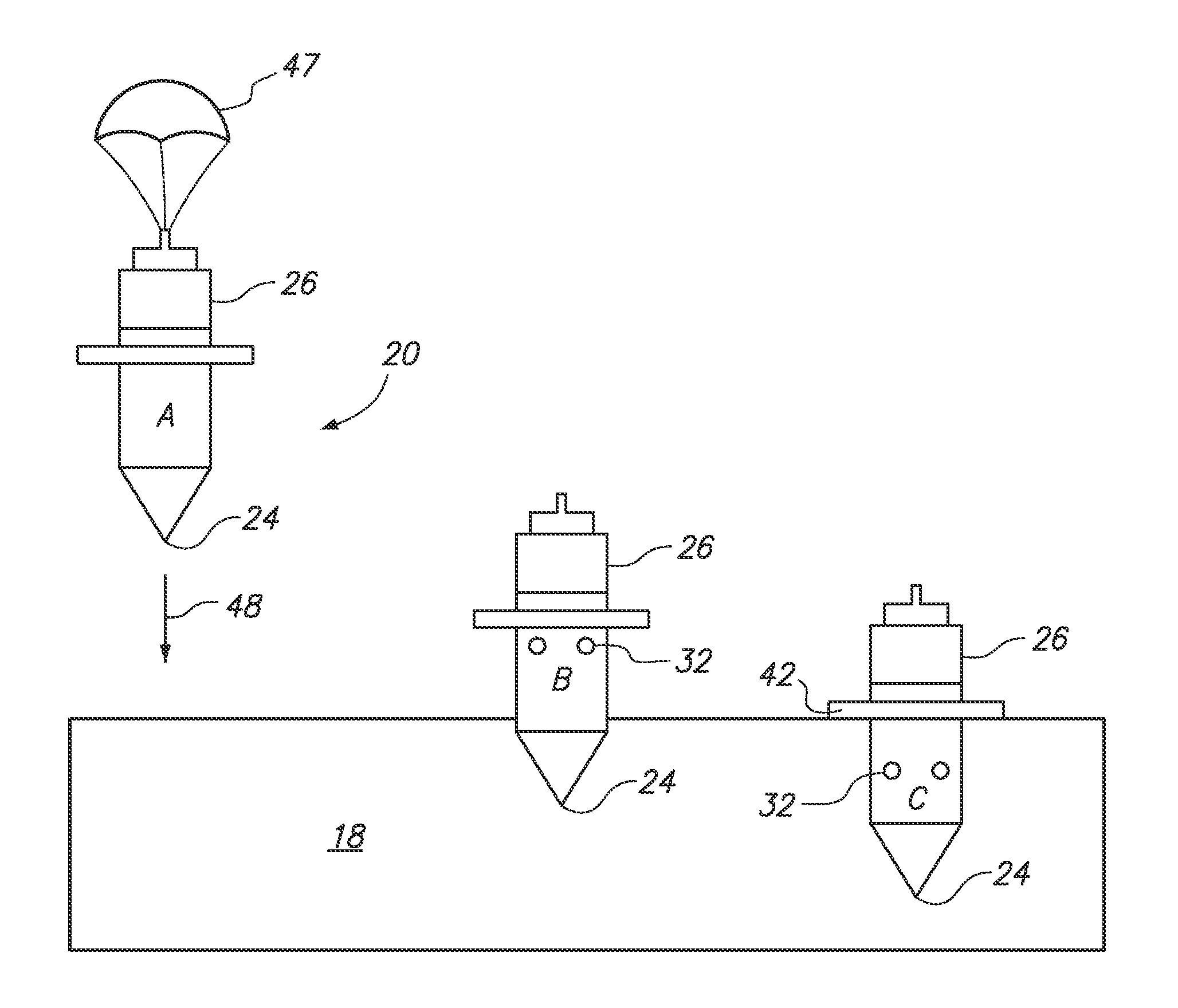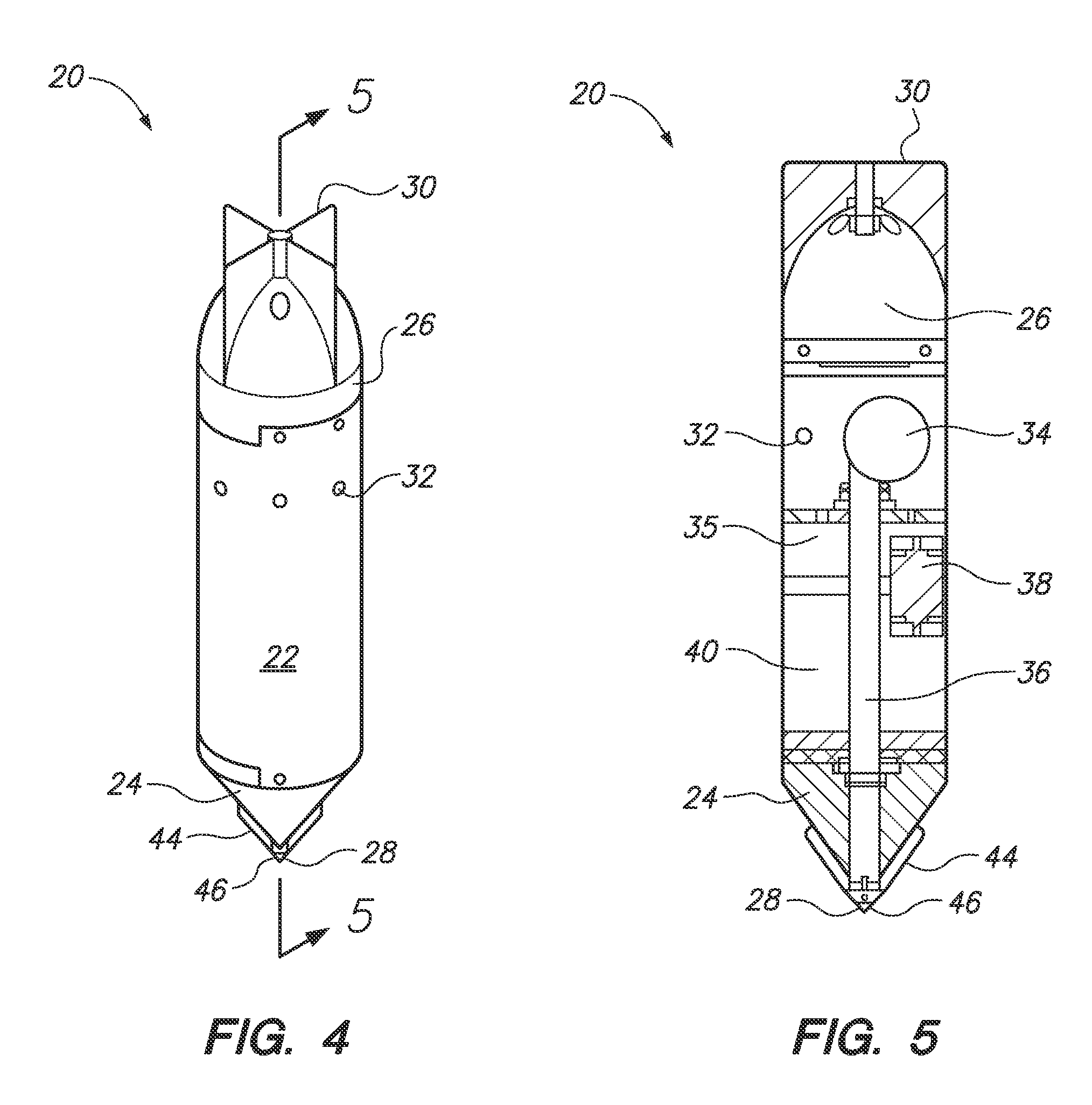Self-burying sediment energy harvester
a sediment energy harvester and self-burying technology, applied in the direction of biochemical fuel cells, etc., can solve the problem of limited effective deployment life of sediment energy harvesters, their persistence is typically limited
- Summary
- Abstract
- Description
- Claims
- Application Information
AI Technical Summary
Benefits of technology
Problems solved by technology
Method used
Image
Examples
Embodiment Construction
[0020]Referring initially to FIGS. 1-3, a microbial fuel cell as known in the prior art is shown an illustrated by reference character 10. As shown, microbial fuel cell (MFC) 10 can include an anode 12 which is buried in or in contact with sediment 18, a cathode 14 and an electronics package 16. FIGS. 2-3 illustrate an MFC 10 utilizing a “bottlebrush electrode” as the anode 12 and / or cathode 14, and in FIG. 3 the anode 12 resides in a permeable tube. It is unclear whether this device could be a self-deployable system or if the system could require divers or submersibles to position the electrodes. But in general, the prior art benthic MFC designs shown in FIGS. 1-3 have generally required manual placement of the anode 12 and cathode 14 in appropriate positions at the sediment-water interface, using divers, underwater sleds or some combination thereof.
[0021]Referring now to FIGS. 4-5, a self-burying MFC 20 of the present invention according to several embodiments is shown and is gene...
PUM
| Property | Measurement | Unit |
|---|---|---|
| conductive | aaaaa | aaaaa |
| chemical energy | aaaaa | aaaaa |
| electrical energy | aaaaa | aaaaa |
Abstract
Description
Claims
Application Information
 Login to View More
Login to View More - R&D
- Intellectual Property
- Life Sciences
- Materials
- Tech Scout
- Unparalleled Data Quality
- Higher Quality Content
- 60% Fewer Hallucinations
Browse by: Latest US Patents, China's latest patents, Technical Efficacy Thesaurus, Application Domain, Technology Topic, Popular Technical Reports.
© 2025 PatSnap. All rights reserved.Legal|Privacy policy|Modern Slavery Act Transparency Statement|Sitemap|About US| Contact US: help@patsnap.com



